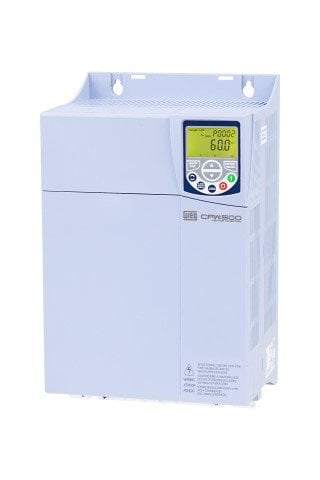www.ptreview.co.uk
31
'22
Written on Modified on
Weg On Ecodesign regulations for motors and drives
Variable speed drives (VSDs) offer an alternative means of improving efficiency and reducing emissions. They intuitively vary voltage and input frequency to control speed and torque in electric motors dependent on the application, reducing energy costs and making processes more environmentally friendly.

Understanding regulatory changes for variable speed drives.
Electric motors are the biggest consumer of energy worldwide, accounting for around 45 per cent of global energy consumption. Regulations on energy efficiency have changed to reflect the European Union’s goals for sustainability and reduced emissions. This now extends to cover ecodesign requirements for electric motors and variable speed drives (VSDs). Here, Marek Lukaszczyk, European and Middle East marketing manager at global motor and drive manufacturer WEG discusses the impact of these requirements and the potential long term benefits in efficiency and cost.
Electric motors consume almost half of the energy produced in the EU, and there are around eight billion of them in use. Mandatory ecodesign regulations established by the European Commission aim to improve motor efficiency and reduce their environmental impact.
Without a VSD, when less force is necessary the system breaks and wasted energy is released as heat. VSDs reduce the force based on the application requirements rather than shutting it off completely, while still operating at maximum capacity.
With the amount of electricity converted by VSDs expected to rise significantly by 2030, the EU has now extended regulations to cover VSDs, with the intention of realising ‘their full potential for cost-effective energy efficiency’. The EU Commission Regulation 2091/1781 was introduced in October 2019, with regulatory changes now in effect since July 2021.
Regulation of drives
The Minimum Energy Performance Standards (MEPS) established in 2009 set out International Electrotechnical Commission standards for motors to adhere to. The standards range from IE1 to IE4, with IE1 being a lower class and IE4 higher. Regulations dictate that motors equipped with a VSD must achieve a IE2 or IE3 level depending on rated power, but until recently these regulations did not extend to the VSDs themselves.
Regulation 2091/1781 now requires all drives in scope to achieve IE2 standard. This means that power losses of VSDs rated for operating with motors with a rated output power equal to or above 0,12 kW and equal to or below 1 000 kW shall not exceed the maximum power losses corresponding to IE2 standards. You can view the efficiency levels in Annex 1, Table 6 of the regulation here.
VSDs must also conform to requirements around product information. Efficiency levels and details of the assessments undertaken should now be displayed in the technical documentation provided with motors and VSDs.
The revised regulations are expected to save 110 TWh of energy by 2030 — equivalent to the electricity consumption of the Netherlands. This will reduce CO2 emissions by around 40 million tonnes annually and reduce energy bills for both homes and industry.
Improving the energy efficiency of your machinery is not only more environmentally friendly, but also more cost effective. Upgrading your motors and VSDs now can help you conform to regulatory changes and reap the long-term financial benefits.
www.weg.net

